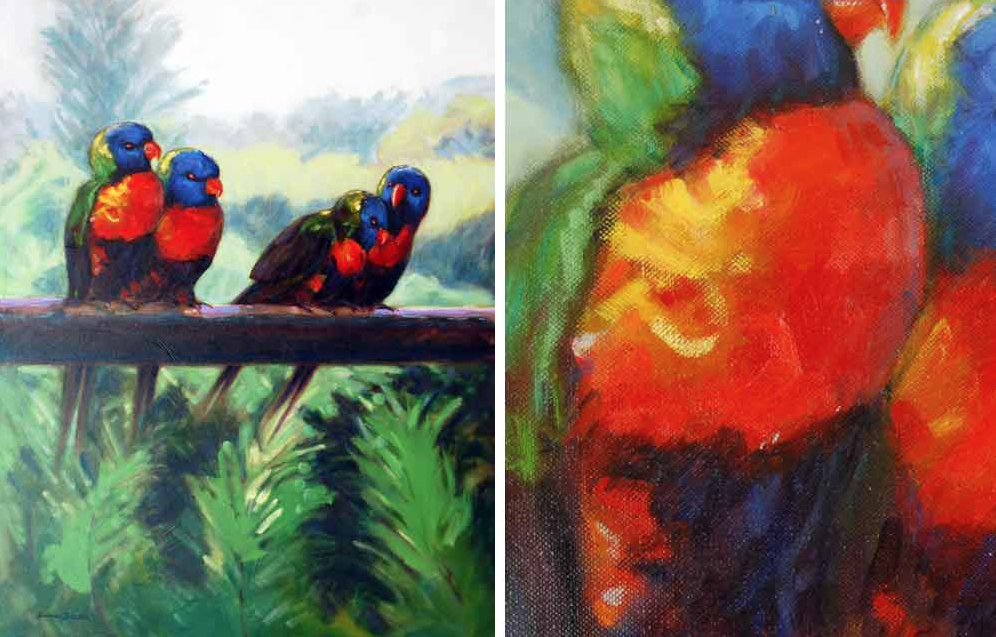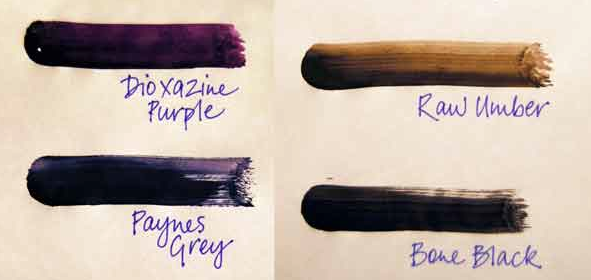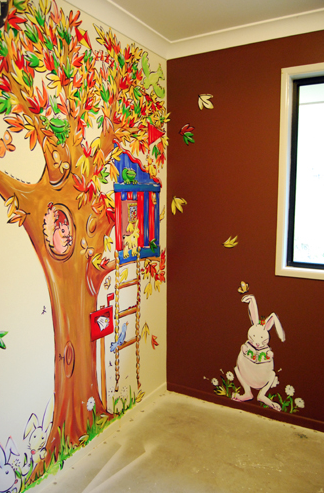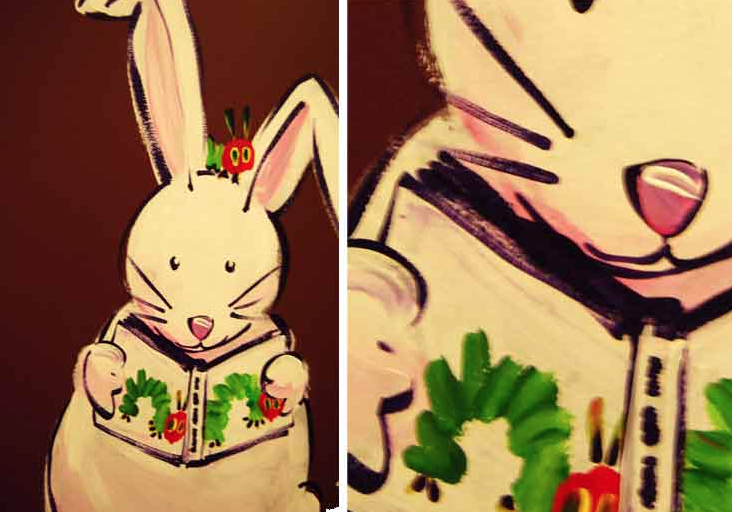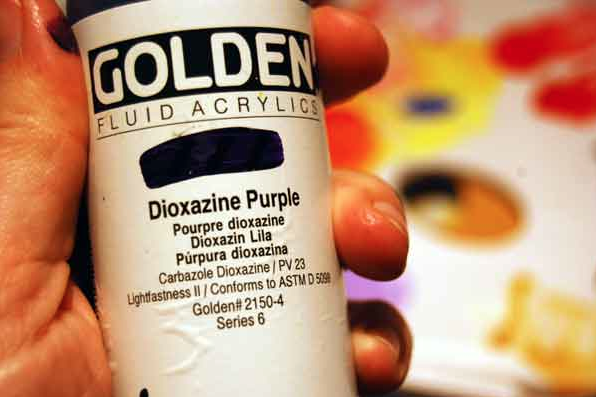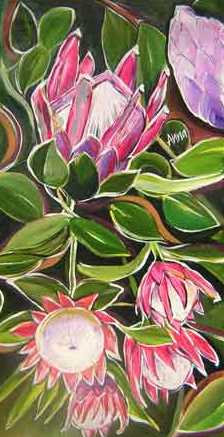Now, this tip applies to artists that use lines in their work (as I do with my illustrative style), as well as people looking to paint darks and shadows…
The background story – my mother, Diana Battle, is a very talented artist. She can paint beautifully in both oils and acrylics, and is also very confident in pastel and watercolour. The next two paintings (with their enlarged sections on the right) are by Mum.
She’s always told me there’s no need to use black straight out of the tube (in the actual painting, that is – it’s still ok to use it as an underpainting or base colour).
She’ll choose to use Paynes Grey (which is a very dark navy) or a dark mix of colours, but feels that black out of a tube, like Carbon or Mars Black, is too flat and uninteresting and unneccessary.
So the message is, that using a ‘black-substitute colour’ creates life in a painting, adding interest and movement. Here are three black-substitutes that I use often, compared to black, on the bottom right.
Now this tip definitely applies to a realistic-style of painting like Mum’s, but it’s something I also remember when painting murals – like this one here…
At a glance the lines look black, but they’re actually painted in Dioxazine Purple (which is my black-substitute of choice). Take a closer look.


